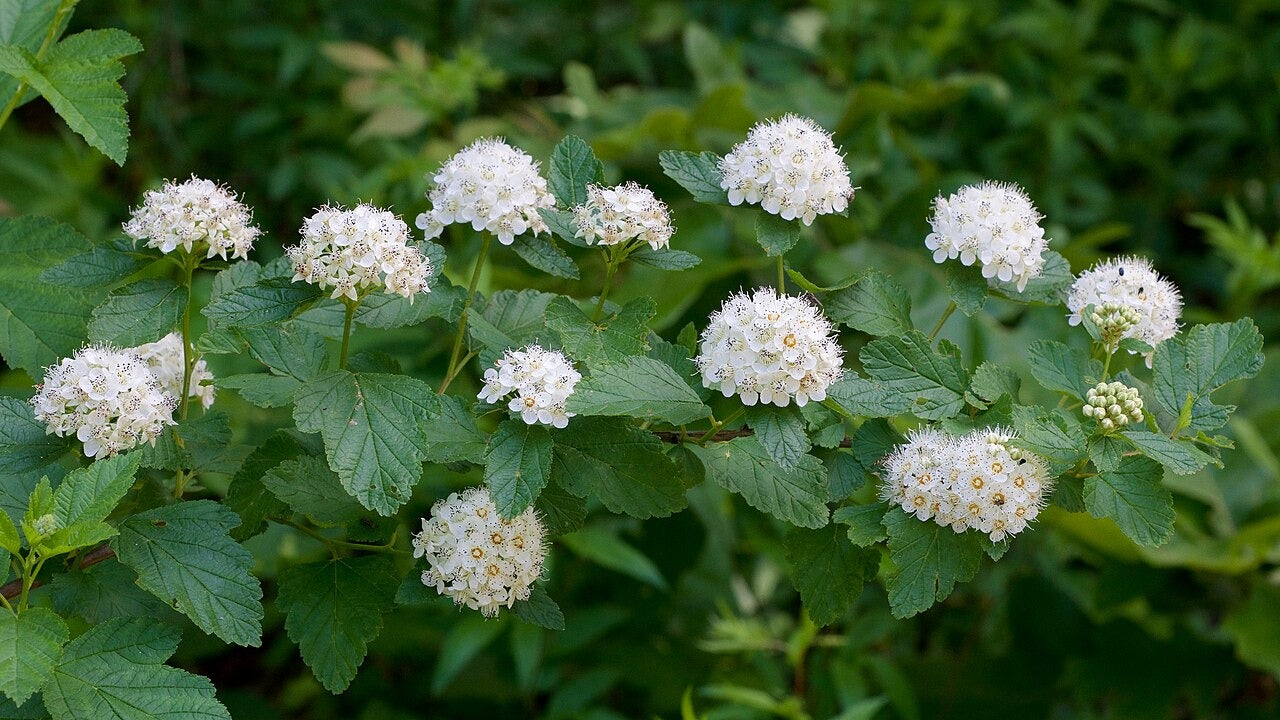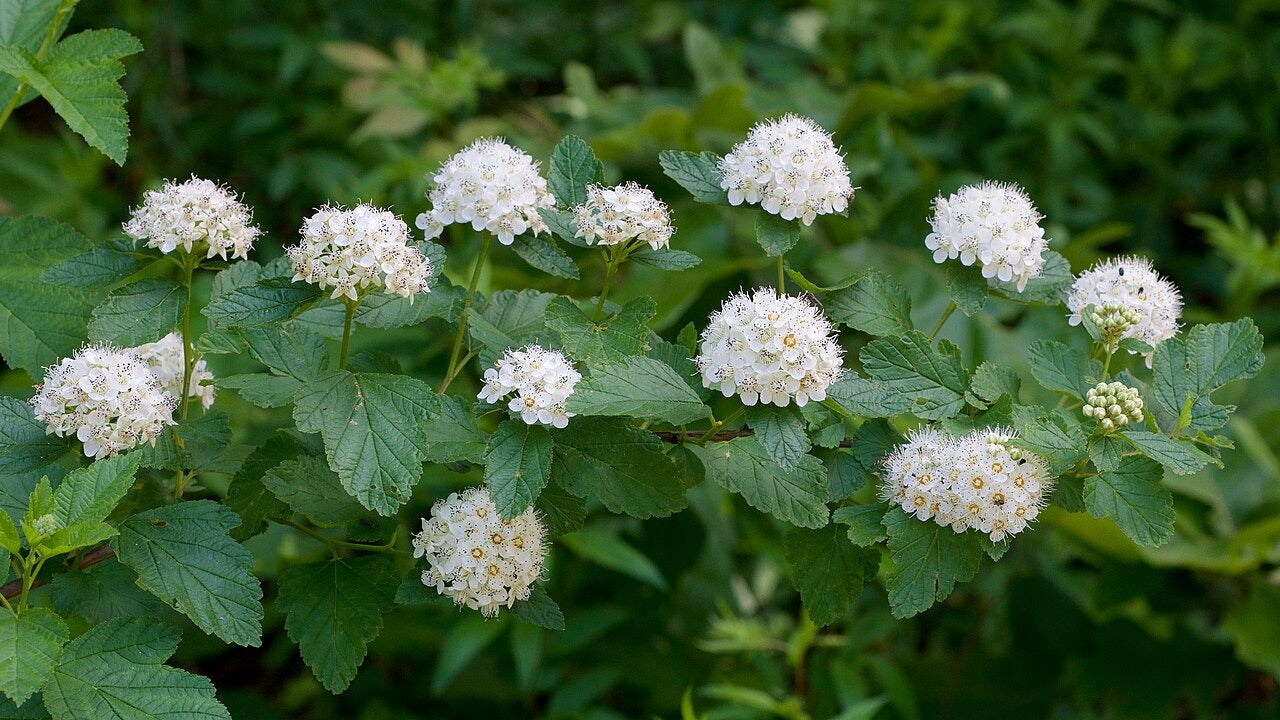About This Plant
Physocarpus opulifolius, commonly known as Common Ninebark, is a resilient and versatile native shrub prized for its multi-season interest. Growing 5–10 feet tall and wide, it forms a dense arching habit that provides excellent cover for birds and pollinators. This deciduous shrub thrives in full sun to partial shade. It tolerates a variety of soils, including dry, rocky, or clay-heavy conditions, making it a reliable choice for erosion control and tough landscapes.
In late spring to early summer, Ninebark produces clusters of delicate white to pinkish flowers that attract bees, butterflies, and other pollinators. These blossoms give way to red seed capsules that persist into winter, offering additional visual interest and food for wildlife. The plant’s common name comes from its exfoliating bark, which peels away in multiple layers to reveal a striking cinnamon-colored underlayer, providing year-round texture and appeal.
Ninebark is a highly adaptable and low-maintenance shrub that withstands harsh conditions, including drought, pollution, and poor soils. It is ideal for naturalized plantings, hedgerows, and restoration projects. In autumn, its deeply lobed, serrated foliage turns vibrant shades of yellow, orange, and red, adding seasonal beauty to the landscape. Pruning can enhance its form, but its naturally arching branches contribute to its wild, rustic charm.
Whether used as a foundation planting, a pollinator-friendly hedge, or a focal point in a mixed border, Physocarpus opulifolius is a dynamic addition to native gardens. Its ecological benefits, striking bark, and resilient nature make it a favorite among gardeners and conservationists.


